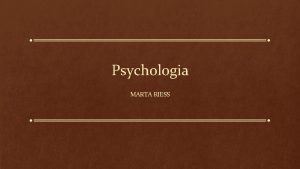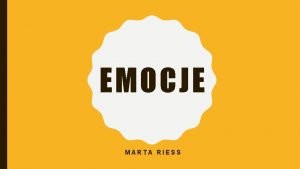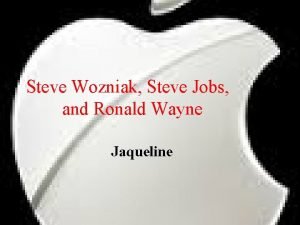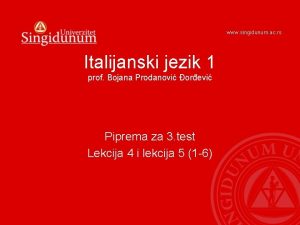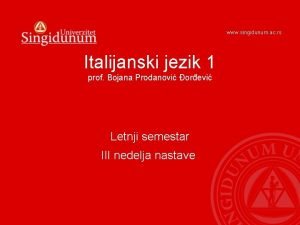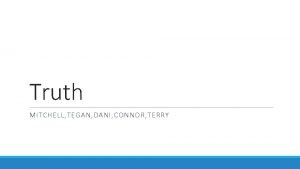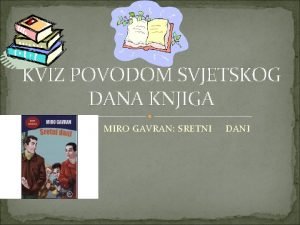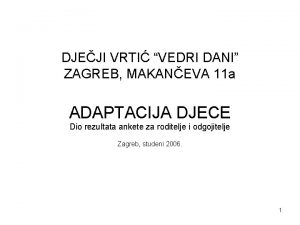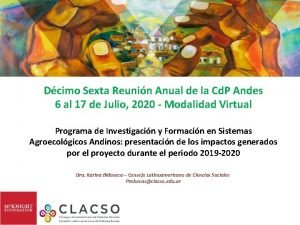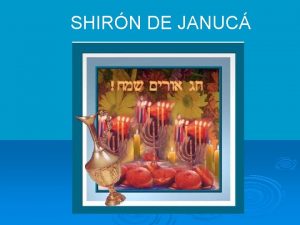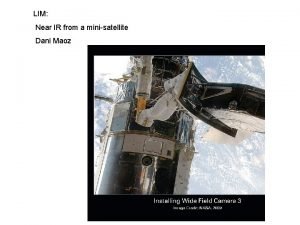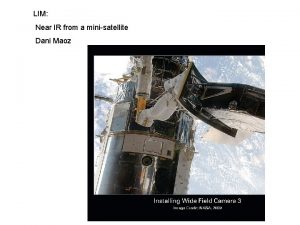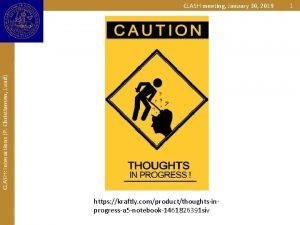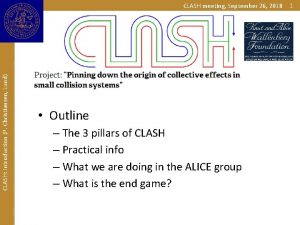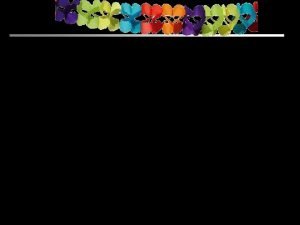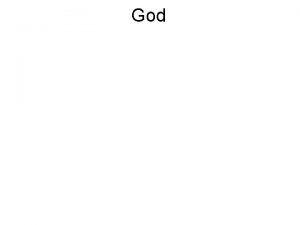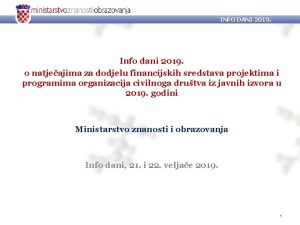CLASH SN Program Adam Riess Dani Maoz Steve











- Slides: 11

CLASH SN Program Adam Riess, Dani Maoz, Steve Rodney, Or Graur, Marc Postman, & the CLASH Team

HST and High-z SNe Ia HST ACS (GOODS, PANS) extended the SN Ia Hubble diagram to z>1. We found 23 at 1<z<1. 5 • By detecting deceleration we confirmed dark energy & dark matter (not astrophysical dimming) • First constraints on w’=dw/dz (Riess et al. 2004, 2007 1750 & 550 citations—R 04 most cited in dark energy field, of any HST) • A worthy goal (Goal 1) is to press to collecting 100 Sne Ia at 1<z<1. 5 to better test of w’=0

Dark Energy Metrics: Near Term 68% -or- 90% 97% 99% Odds to reject L In unit phase w/w’ space -or-or- Present=Planck CMB priors, SDSS II BAO, SN World compilation, 5% H 0 prior

Goal 2: As we look farther back we might expect an evolution or shift in demographics of SN Ia progenitors (e. g. , min main-sequence donor and mean metallicity of formation) SNe Ia at z>1. 5 provide a direct approach to calibrating such evolution (Riess And Livio 2006). Assuming Universe is matter-dominated at z>1. 5 (r. M/r. DE scales as (1+z)3), deviations indicate directions/scale of possible evolution. As Sne Ia at z<0. 8 are key to the ultimate DE measurement, this experiment is crucial to assembling DE puzzle. WFC 3 -IR provides first opportunity to search for Sne Ia at 1. 5<z<2. 5

SN Ia Rates and the Progenitor Problem • Drop in rate at z>1, suggests long delay time (Dahlen et al. , Strolger et al) (Conflict with local correlation with star formation has led to 2 -component model). Could we have missed Sne Ia? Two other groups confirm, but what if much more obscuration by dust than expected? • Goal 3: Measure SN Ia rate at z>2 • Goal 4: Re-measure SN Ia rate at z>1 in IR to mitigate putative dust

SN Searches in Clash Parallel SN Search Cluster SN Search

SN Search Layout WFC 3 Parallels Cluster Pointings ACS Parallels 6 arcmin. = 2. 2 Mpc @ z=0. 5 SN search cadence: 10 d-14 d, 4 epochs per orient Footprints of HST Cameras: ACS FOV in yellow, WFC 3/IR FOV in red, WFC 3/UVIS in blue. Footprint of our 2 ORIENT survey: The area of the complete 14 -band coverage in the cluster center is 4. 07 square arcminutes (88% of the WFC 3/IR FOV). Lensing amplification small at these radii

Color Discrimination • Sne Ia have a UV deficit compared to common Sne II (we used this successfully with ACS) • Color discrimination (UV deficit) requires observed 3300*(1+z) < pivot wavelength) means we need contemporaneous optical color Near-IR Colors not Blue Enough Optical Colors are Blue Enough But Long Pass Filters Are Faster

Search Epoch Data Processing Pipeline Template Mosaic To. O Follow-up Difference Images SN Searching Reference Mosaics Host photo-z CLASH data Ancillary data Pipeline SN! Ground-based spectroscopy SN Analysis Grism Data Processing Host Galaxy Analysis

Follow-UP Cluster MCT Program (Postman et al)

Cannibalize and Follow-up • We will cannibalize search when we find SN and use To. O orbits • Expected yield: ~7 @ 1<z<1. 5, 1 @ z>1. 5, plus CANDELS

